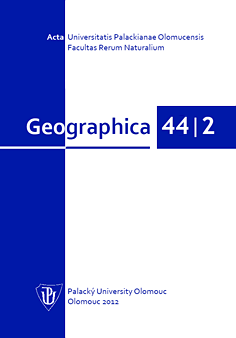Geographica 44/2 (2013)
|
Acta Universitatis Palackianae Olomucensis |
 |
| Back to contents | Zpět na obsah |
Spatial consequences of biogas production and agricultural changes in the Czech Republic after EU accession: mutual symbiosis, coexistence or parasitism?
Stanislav Martinát, Petr Dvořák, Bohumil Frantál, Petr Klusáček, Josef Kunc, Marián Kulla, Tatiana Mintálová, Josef Navrátil, Dan van der Horst
Full text: ![]() PDF colour (2 MB),
PDF colour (2 MB), ![]() PDF press (1 MB)
PDF press (1 MB)
Received: June 1, 2013
Accepted: June 25, 2013
Abstract
Renewable sources of energies and its support have been recently experiencing wide public debate in the Czech Republic that varies from agreement to complete denial. Nevertheless support from national and EU sources is factor that heavily influenced dynamic development of this sector in last decade. Anaerobic digestion plants are one of options for production of renewable energies (biogas in this case) that have experienced next to solar plants the most important increase of its installed capacities. This contribution first aims to analyse phenomenon of anaerobic digestion plants, its legal, strategic support, supporting financial incentives, individual types of such plants, and secondly based on available statistical data to analyse spatial distribution of agricultural anaerobic digestion plants. On basis of comparison of data for increasing biogas production and declining agriculture in regions of the Czech Republic basic consequences are deduced. In context of spatial distribution of agricultural anaerobic digestion plants structures of sowing areas and intensities of animal husbandry are shortly discussed. We can conclude that agricultural anaerobic digestion plants have been increasingly influencing the structure of sowing areas of agriculture of the Czech Republic and such facilities are in both agricultural sector and wide society perceived more as alternative source of income than contribution to environment protection, limitations for greenhouse gases production and climate change.
Key words
anaerobic digestion plants, agriculture, Czech Republic, spatial differentiation
Last modified 31/08/15 | ↑ top